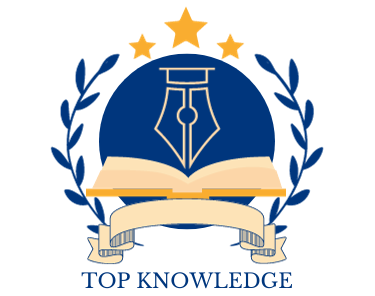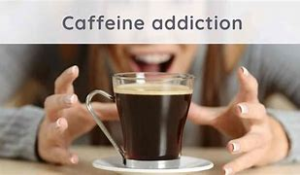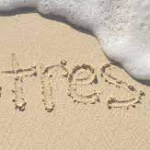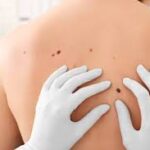Wait, do you even know what Caffeine Addiction is? and how will you get rid of this caffeine addiction?
Caffeine addiction is the excessive and harmful use of caffeine over a period of time, such that it has negative effects on your health, social interactions, or other areas of your life. Go through to know how to get rid of your caffeine Addiction.
Coffee and other caffeinated products can create a physical dependence, leading to chemical changes in the brain. Daily consumption can quickly lead to a caffeine addiction, characterized by cravings and withdrawal symptoms if intake is reduced or ceased.
When you have a caffeine addiction, it means that your caffeine use negatively disrupts your life, yet you’re unable to stop consuming it. Or you consume it in amounts that are potentially dangerous to your health despite knowing that it may harm you mentally or physically.

Symptoms of Caffeine Addiction
Caffeine is a stimulant and the most commonly used drug in the world. Benefits can include increased alertness, energy, and concentration. However, it can also lead to insomnia and headaches.
- jitters and shakes
- disrupted sleep
- fast or uneven heartbeat
- high blood pressure
- headaches
- nervousness or anxiety
- dizziness
- dependency
- dehydration
- irritability
- heartburn
- stomach upset, diarrhea, and nausea
- muscle tremors
As with all addictions, the pleasurable effects of caffeine can also sometimes mask other issues. Lack of energy and depression may underlie caffeine addiction. People may rely on caffeine to compensate for sleep disorders.
Do You Have a Caffeine Addiction?
YES! If you feel these way;

- Your head starts pounding if you skip your morning mug.
- You’re super grumpy before your first dose.
- You can’t concentrate without being caffeinated.
- You need more to get the same effects you used to get.
- You’re always a little on edge.
- You just can’t bear to say goodbye.
How to get Rid of your Caffeine Addiction
Who doesn’t love a cup of hot coffee in the morning? It helps you kick-start your day and refreshes you instantly! But, if you are addicted to coffee, you could be heading towards trouble! Although drinking coffee moderately possesses its own health benefits, consuming caffeine in excess could have an adverse effect on your health and prevent you from being your most effective.

1. Keep tabs on your overall caffeine consumption
The first step to breaking the cycle of caffeine addiction is to identify how much you’re consuming. This way, you can get a sense of how much to cut back each week to gradually taper off caffeine.
2. Set goals for yourself
Quitting caffeine takes a lot of commitment, so set small goals for yourself along the way. Make a schedule with milestones to reach by a particular date. If you make small goals over time, you will feel a sense of accomplishment that will keep you going.
- You can aim to get down to a certain amount of coffee in, say, a month. A goal could be something like, “Reduce caffeine intake to one cup a day by March 1st.”
- Have small goals along the way. For example, “Skip the afternoon coffee three days this week.”
3. Cut back gradually.
Set reasonable goals for yourself. You’re unlikely to, say, halve your caffeine consumption in a single week. Instead, work on lessening the amount you drink each week in tiny increments.[3]
- If you’re a coffee drinker, try drinking 1/4 less cup of coffee each week. If you prefer soda or energy drinks, try eliminating half a can every two days. Pick an amount to cut back that feels reasonable to you and proceed from there.
4. Look for hidden sources of caffeine
Caffeine is everywhere. In addition to being in surprising food sources, you can find it in certain medications. If you’re reaching for an over-the-counter painkiller to alleviate caffeine withdrawal, make sure your chosen painkiller isn’t loaded with caffeine.
- Teas, coffees, energy drinks, and sodas are the most obvious sources of caffeine.
- You may also find caffeine in unusual places. Protein or diet bars, coffee flavored ice creams, migraine medications, and chocolate may contain caffeine.
5. Replace a small amount of regular coffee with decaf coffee
In the morning when you prepare your coffee pot, mix half and half decaf grounds or beans with regular grounds or beans. This way, even if you drink more coffee than you intended, you’re still not getting as much caffeine.
6. Drink green tea
Green tea does have some caffeine, but not as much as things like coffee, soda, and energy drinks. If you’re feeling the need for an afternoon pick-me-up, opt for a green tea over a coffee or soda. This will keep you going while still reducing your overall intake of caffeine. You can also try switching out coffee for green tea throughout the day. For example, have four cups of green tea instead of four cups of coffee. Once you feel comfortable drinking tea, reduce the amount of tea you consume.
7. Try herbal supplements for extra energy
Some natural herbs and medicinal mushrooms may help you stay awake. These can usually be bought as supplements at health food stores. You might try:
- Ginseng
- Ashwagandha
- Wild oats seed
- Rhodiola
- Holy basil leaf
- Lion’s mane mushroom
8. Try peppermint for withdrawal headaches
If you’re feeling a caffeine headache coming on, try using peppermint. The scent and taste of peppermint may reduce headaches, lessening the symptoms of caffeine withdrawal.
- Try dabbing some peppermint scented lotion or perfume behind your ears or on your wrists.
- Have a peppermint flavored candy, chew peppermint gum, or drink a cup of peppermint tea.
9. Socialize without caffeine
Caffeine is often a major component in socialization. You may, for example, meet a friend at a coffee house in the afternoon. Look for ways to socialize with others without consuming caffeine.
- If you meet your friends at a coffee house, opt for herbal teas, which do not contain caffeine.
- You can also find places that specialize in herbal tea. Going to a coffee place for tea can be disappointing, as tea-based drinks may not be as flavorful. If a friend wants to meet up at a coffee house, try to find a place that specializes in tea as well.
10. Stay hydrated
Since heavy caffeine users often get their fix through drinks like coffee or soda, cutting out caffeine means you’ll be cutting out some of the major sources of water in your diet. Be sure to replace this with other liquids like water, herbal teas, or diluted juices. Drinking water throughout the day can help you stay more alert. It also gives you something to do with your hands besides drinking coffee. Instead of having a thermos or mug by your side, have a bottle of water.
11. Have patienceAt first, withdrawal symptoms may seem unbearable. However, keep in mind they are temporary. Remind yourself of all the benefits you’re getting from lessening your reliance on caffeine. You will be saving money and improving your health. Give it time and it will get easier. its easy to get rid of your coffee addiction than you think.
12. Seek Help For Mental Health Symptoms
If you feel you are using caffeine to cope with an emotional problem, such as depression or anxiety, talk to your physician about treatment options. The right treatment could make a huge difference for you.
Caffeine addiction often overlaps with other behavioral addictions,such as sugar addiction. So, you might find that evaluating your caffeine intake also identifies other behaviors that need to be addressed.
Summary

Caffeine is a stimulant often consumed daily in many forms, including coffee, soda, tea, energy drinks, and chocolate. Low or moderate amounts are safe and may even have certain health benefits. Excessive intake, however, can adversely affect health and lead to caffeine addiction.
You may like to read: Amazing way of releasing stress in 2024




Pingback: How to prevent skin cancer - Top Knowledge prevention of skin cancer